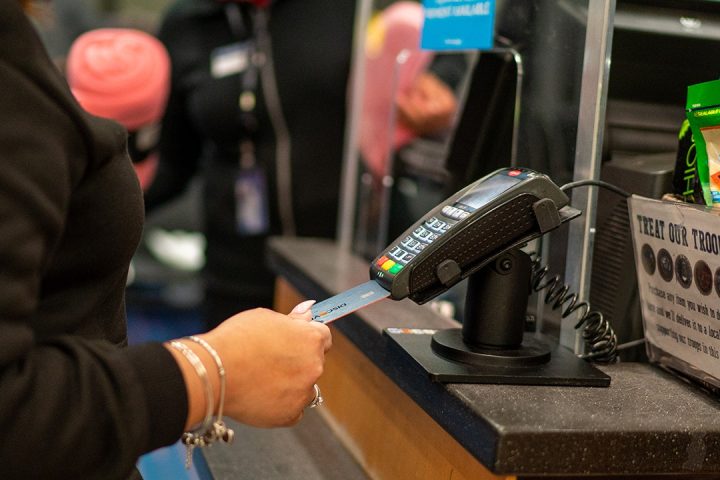As borrowers gear up for federal student loan bills resuming this fall, they face a revamped landscape that includes a new repayment plan, servicer switches and long call wait times. Another imminent concern: scammers who want to take advantage of the moment.
“Whenever there’s confusion in the marketplace, that’s when the criminal fraudsters get active,” says Clayton LiaBraaten, senior executive advisor at Truecaller, an app that blocks spam calls.
Borrowers need to protect themselves, even as regulators crack down on scammers. In August, the Federal Trade Commission (FTC) caught a group of scammers who brought in roughly $8.8 million with false promises of “Biden Loan Forgiveness” in exchange for hefty upfront fees. The group claimed to be affiliated with the U.S. Department of Education and primarily targeted borrowers via calls and texts, the FTC said.
If you receive an unsolicited call or text about your student loans, it’s probably a scam. Here’s how to spot and avoid a student loan repayment scam — and what to do if you think you’re a victim of one, according to experts.
What to watch out for
Student loan scams vary widely, but they often contain a few key ingredients. Here are some common red flags.
Advertising from the ‘government’
Scammers will often use the word “federal” in their communications, LiaBraaten says. They might claim federal or government affiliation, or they could claim to be connected with the Education Department or your student loan servicer.
Aggressive advertising language can also indicate that communication isn’t from the government.
“If you are a student loan borrower, you need to be aware that the federal government isn’t soliciting you,” says Leslie Tayne, a financial debt attorney. “If it sounds like a sales pitch with guarantees and promises, that’s not coming from the federal government.”
Relief that costs money
If someone asks you to pay an upfront or monthly fee to access debt relief, it’s a scam.
It’s always free to enroll in or benefit from any legitimate federal student loan relief, such as income-driven repayment (IDR) plans, borrower defense to repayment, Public Service Loan Forgiveness and the IDR account adjustment.
And if you have questions about your loans or repayment options, you can call your servicer for free guidance.
Promises that are too good to be true
Keep your guard up if you receive calls with promises of instant student loan relief. Most federal relief programs require at least a decade of payments to qualify — and no company or person has the ability to negotiate a special deal with your loan servicer or the government, warns the Education Department.
“Legitimate loan forgiveness programs usually have these strict eligibility criteria, so any sort of instant forgiveness is a red flag,” says Ally Armeson, program director of the nonprofit Cybercrime Support Network. Scammers see an opportunity with people panicking around repayment and try to position themselves as saviors, she says.
Also read: Biden’s new student-loan plan: Who qualifies for debt relief? What you need to know.
How scammers reach you
Student loan scammers can get creative with their contact methods. Here are a few to watch out for.
Robocalls
Think twice if your phone rings with an unknown number. In the first half of September, scammers placed more than 350,000 student loan-related robocalls, according to Transaction Network Services, a financial infrastructure firm.
“Beware of unsolicited calls or communication,” Armeson says. “That is the number-one way that a scammer will weasel into your life.”
Snail mail
Scammers may also send letters through the mail. Read them closely. Even if it seems official or formal, a scam letter will often include grammatical or spelling errors, the Education Department says.
Texts and social media
Increasingly, scammers are also targeting borrowers with texts and social media messages, Tayne says. Scams that began on social media have accounted for $2.7 billion in reported losses since 2021, more than any other contact method, the FTC said earlier this month.
Official Education Department text messages will only come from the numbers 227722 or 51592.
Scammers may try to sneak into your inbox. If an email looks suspicious, double-check the sender.
Legitimate emails from the Education Department will only come from these senders:
Personal finance, real estate
Don’t miss: Thieves can empty your bank accounts if you’re still using this outdated payment method
Protecting yourself from a student loan scam
Don’t engage if you receive a call about your student loans out of nowhere. Hang up if it’s a robocall; if a person is on the other side, quickly end the call.
“If someone says they are from a specific agency, department or loan servicer, just say, ‘you know what, let me hang up and do my research, and I’ll go from there by myself,’” Armeson says.
If you get an email or text about your student loans, don’t click on any links.
Use strong passwords and enable two-factor authentication on all of your online financial accounts, including your StudentAid.Gov and student loan servicer accounts, LiaBraaten says.
Never share your login information. With just your username and password, scammers can sign legally binding student loan documents electronically and make changes to your federal student loan account.
The Education Department and your servicer will never ask for your password.
Related: It’s easy to get duped out of thousands of dollars by this bank scam — how to spot it and avoid it
What to do if you’re a student loan scam victim
If you believe a scammer has targeted you, immediately stop communicating with them. Then, take the following steps to get help and protect yourself from any further harm:
- Contact your student loan servicer. Call your servicer and tell them what happened. Check the status of your loan and ask if the scammer did anything to your account.
- Call your bank and credit card company. Ask them to stop any payments to a scammer.
- Change your passwords. Change all passwords associated with your financial accounts and student loans, like your StudentAid.gov and servicer accounts.
- Monitor your finances. Check to see if anyone has opened an unauthorized account or line of credit in your name.You can check your credit report for free each week on AnnualCreditReport.com.
- Consider freezing your credit. If you think the scammer may have personal information, like your Social Security number, freeze your credit to prevent identity theft and fraud.
- Save all communication records. If the scammer has texted or emailed you, save these records to send the information to the FTC and other law enforcement agencies.
Report possible scams to the FTC, which may use the report to spot trends, educate the public and bring cases against fraudsters in partnership with more than 2,800 law enforcement organizations.
If scammers took your money, the FTC will also give you advice on how to recover it. “The quicker you act, the better your chance of getting your money back,” the FTC website says.
You can also report the student loan scam to your state’s attorney general’s office or the Consumer Financial Protection Bureau for further assistance and investigation.
More From NerdWallet
Eliza Haverstock writes for NerdWallet. Email: [email protected]. Twitter: @elizahaverstock.
Read the full article here







